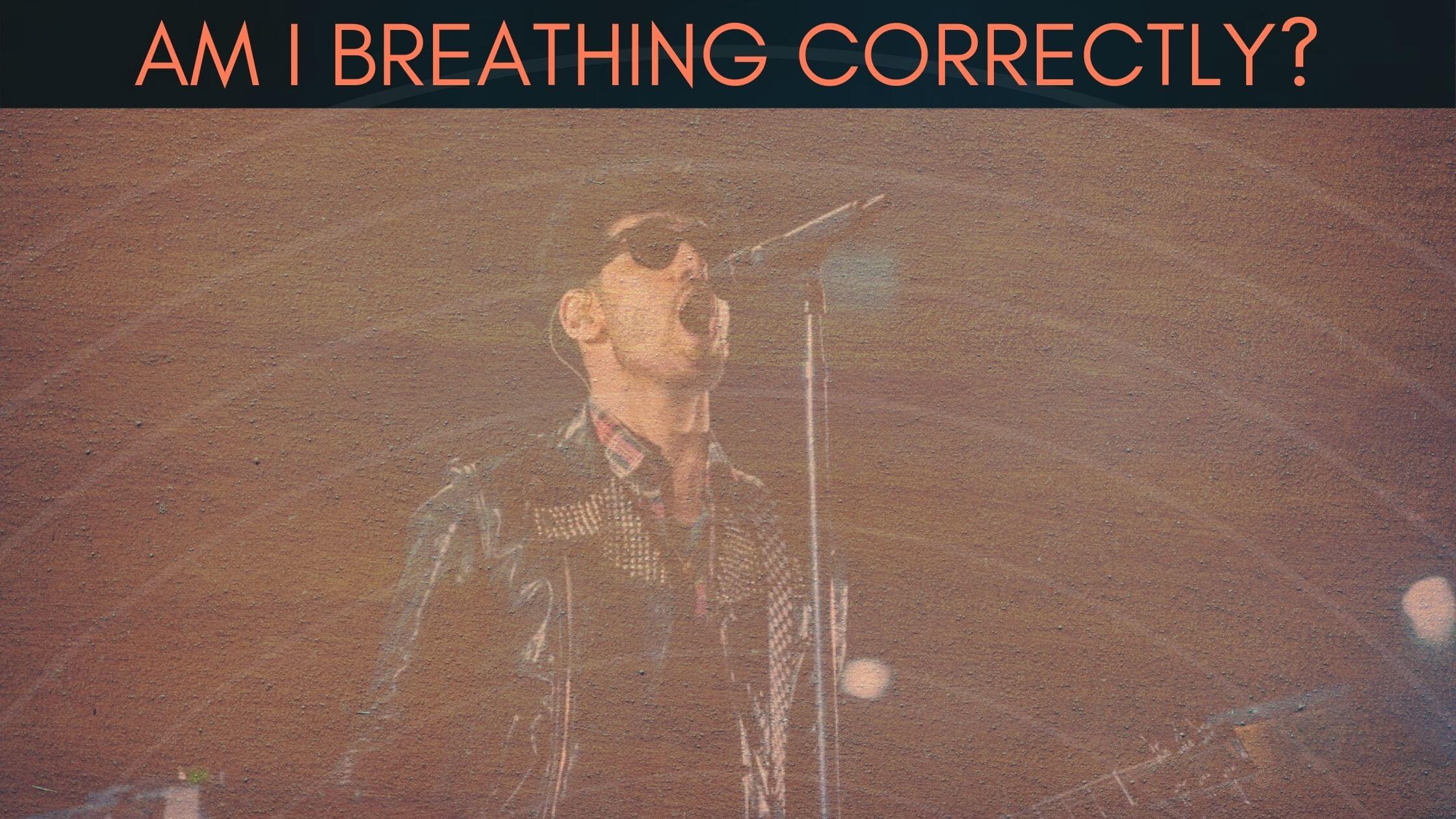Am I Breathing Correctly?
July 30, 2021
Am I Breathing Correctly?: Answering common questions about breath & support.
Camille van Niekerk
This article will answer some of the most frequently asked questions about breath and support. If you have a question that was not answered, head to our forum!
How am I supposed to breathe?
Believe it or not, breathing for singing doesn’t need to be that complicated. The basics are:
(1) stand with good posture: spine is long, chest is lifted, shoulders + arms are relaxed
(2) relax your belly muscles so they can move
(3) inhale through your mouth (when you’re preparing to sing)
(4) control your exhale to supply a steady stream of air to your vocal folds
That 4th step, of course, is where most of the work comes in. You can feel your abdominal muscles naturally “working” to help control your exhale when you exhale on a hiss or a lip trill.
Why is it called breath “support”?
Different teachers will probably answer this differently. They might say your breath is supporting “the voice” or “the sound”, but that’s a bit of a fuzzy concept for beginning singers.
In reality, your abdominal muscles are “supporting” your vocal folds. How, you ask? Well, even with a medium-sized inhale, we’ve taken in a decent amount of air. Air is the “fuel” that powers our vocal fold “engine”. And while we do use that air, it’s not flowing without resistance. Your vocal folds provide some of that resistance, “holding back” the air as they continuously close and open during vibration. (When your vocal folds stay open for longer, more air passes through, and you can’t sing long phrases very easily.) But your vocal folds are SO tiny.They function better when they have some help -or in this case, some “support”. Your abdominal muscles provide that support by resisting (or “holding back”) the air, too.
Should I take big breaths?
In general, you don’t actually have time for a huge breath between phrases. Plus - it’s possible to over breathe: taking in more air than you can actually use. Aim for a relaxed, medium-sized breath -unless you do have a long phrase or challenging “belted” section ahead. Your inhale should match the demands of the phrase you’re about to sing.
Is my belly supposed to stay inflated while I sing?
First, let’s get our priorities in place. The MOST important factor in your breath support is your posture. It’s more important than anything else, because onceyour shoulders roll forward and your chest collapses, it's WAY harder to stay supported.
Some teachers will tell you that you must keep an inflated belly at all times. Here’s my answer: engage your intercostals and lower abdominals to keep your rib cage expanded - but know that you will lose some of that expansion as you use your air. We want steady air flow, not "locked" muscles, and more often than not, beginning singers will lock up their abdomen in the pursuit of staying expanded. Feel those muscles engage without locking up by breathing in and suspending (holding) the air for a second or two before exhaling. You can also feel the correct muscle engagement by singing on a lip trill.
My posture is great, and I feel my abdominal muscles working, butI’m still running out of breath.
Be aware of extra air “leaking” through your vocal folds and causing a breathy tone. It’s counterintuitive to some, but you typically use more air for quiet, breathy singing due to the fact that your vocal folds aren’t working as efficiently. Try singing with a slightly louder, fuller tone. If you’re having trouble with that, you can always add some cord compression “training wheels”, like an initial G or B sound (ie: sing on a syllable like GIG or BUB), an SOVT ( https://www.voicescienceworks.org/sovt-exercises.html ) or a little twang (catty/nasal sounds that help bring the folds together without pushing).
I can manage my breath on exercises, but not songs. What do I do?
Within songs, we typically have less time to breathe, and the spots where we can breathe are somewhat irregular. The first thing to do is plan your breaths out. Print the lyrics (or use a tablet with the ability to make edits) and mark the places where you couldtake a breath if you needed one: between sentences, between phrases/clauses, and at any spot where there would be some sort of pause or punctuation if the lyrics were written as prose. Most of the time, that'll be the fix! We often forget to breathe, or don't take breaths where we could. If there isn’t a good place to breathe, you may need to (1) grab a quick “catch-breath” somewhere within a phrase, (2) take a larger breath before the phrase in question, and/or (3) eliminate or reduce air leakage, especially on airy consonants. See below for some easy consonant swaps:
F →V
H → Glottal onset (the sound you make at the start of the word “up” or “apple”)
P → B
S → Z
SH → ZH
Closing thoughts.
If this concept isn’t clicking yet, I encourage you to hear from a variety of teachers, and hopefully one of their explanations will help you! Here are a few of my favorites from teachers with solid technique:
Arden Kaywin: https://www.youtube.com/watch?v=E9z-rnZ_OyE
Justin Stoney (New York Vocal Coaching): https://www.youtube.com/watch?v=oDrhkt8KIA4
Karyn O’Connor (Singwise): https://www.youtube.com/watch?v=7KdbUwSYjdA


